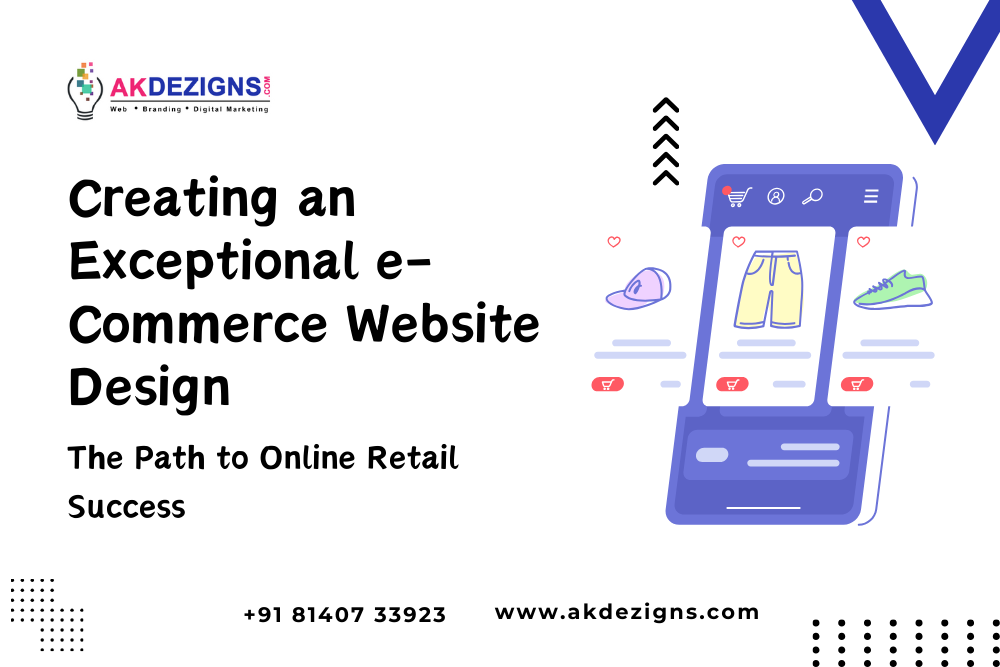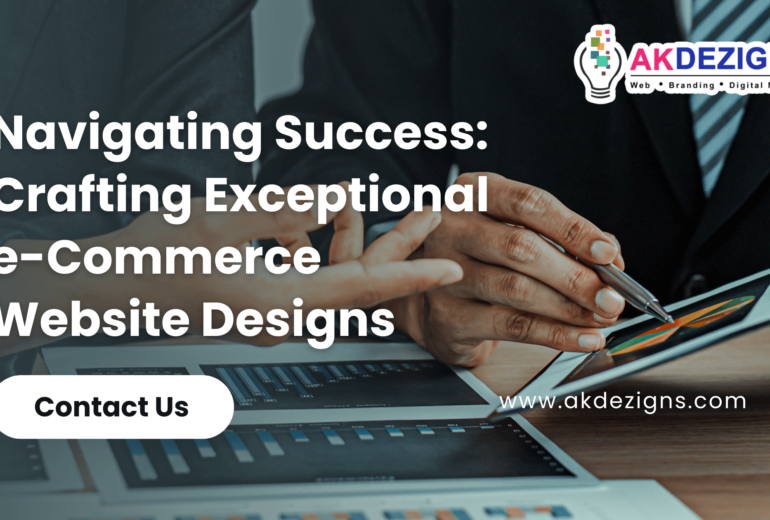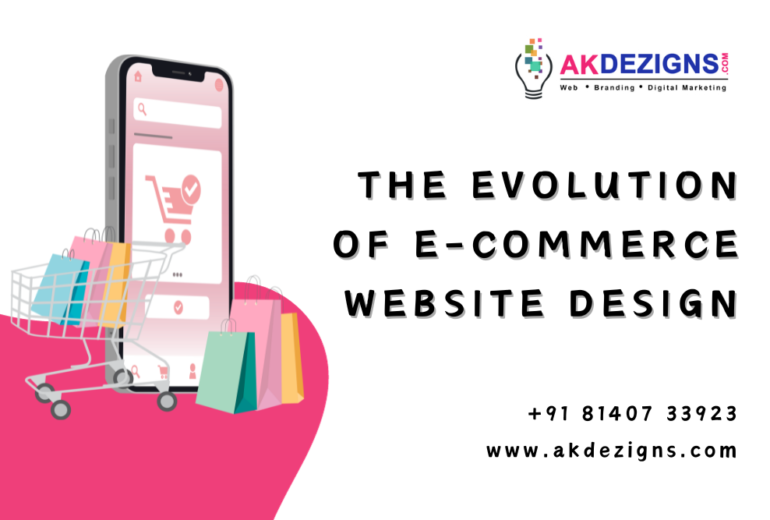In today’s digital landscape, e-commerce has become a driving force in the retail industry. As more consumers turn to online shopping for convenience and variety, the importance of an exceptional e-commerce website design cannot be overstated. In this blog post, we will delve into the essential elements of e-commerce website design and explore how it can pave the way for your online retail success.
1. User-Centric Design: Putting Shoppers First
The cornerstone of a successful e-commerce website is a user-centric design. Your website should prioritize the needs and preferences of your customers. This includes intuitive navigation, a user-friendly shopping cart, and a straightforward checkout process. The goal is to make the buying journey as smooth as possible, reducing friction and cart abandonment.
2. Mobile Responsiveness: Capturing the Mobile Audience

In the era of smartphones, a mobile-responsive design is no longer an option but a necessity. A significant portion of online shopping occurs on mobile devices. Ensure that your e-commerce website is optimized for different screen sizes and devices, providing a seamless shopping experience for mobile users.
3. High-Quality Product Imagery: Showcasing Your Products
Visual appeal is paramount in e-commerce. High-quality product images allow customers to inspect items in detail before making a purchase. Implement zoom features and multiple images per product to provide a comprehensive view. Clear, well-lit photos can significantly boost customer confidence in your products.
4. Compelling Product Descriptions: Informing and Persuading
In addition to images, engaging and informative product descriptions are vital. They should not only describe the product’s features but also convey its value and benefits to the customer. Well-crafted product descriptions can influence purchase decisions.
5. Secure Payment Gateways: Building Trust

Security is a top concern for online shoppers. Provide secure payment options and prominently display trust badges to assure customers that their financial information is safe. This trust is crucial for building lasting relationships with your audience.
6. Search and Filter Functionality: Navigating the Inventory
If your e-commerce website carries a wide range of products, a robust search and filter system is essential. This feature enables customers to quickly find the products they’re looking for, enhancing their overall shopping experience.
7. Reviews and Ratings: Building Credibility
Integrate customer reviews and ratings on your product pages. Authentic feedback from other shoppers helps build trust and credibility. It also provides valuable insights for potential buyers.
8. Personalization and Recommendations: Enhancing the Shopping Experience
Leverage data and algorithms to provide personalized product recommendations to your customers. This not only helps customers discover products they may have missed but also adds a layer of personalization to their shopping journey.
9. Customer Support: Responsive and Accessible
Offer multiple channels for customer support, including live chat, email, and a clear contact page. Ensure that inquiries are promptly addressed, and customers receive the assistance they need.
Contact Information: Making It Easy to Reach You
Contact Details:
Visit our website: akdezigns.com
Call us: +91 81407 33923
Lastly, make it easy for customers to contact you with any questions or concerns. Display your contact information prominently on your website.
In conclusion, a well-designed e-commerce website is the gateway to online retail success. By focusing on user-centric design, mobile responsiveness, product presentation, security, and customer engagement, you can create a website that not only attracts customers but also converts them into loyal shoppers. Embrace these design principles, adapt to evolving consumer preferences, and watch your e-commerce business thrive.




